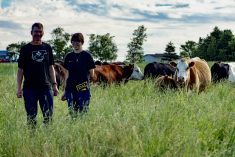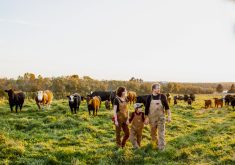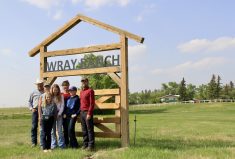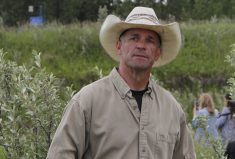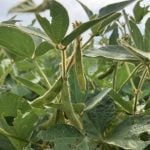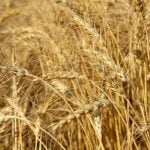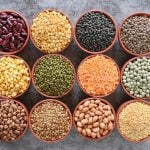There’s a lot of buzz surrounding carbon markets, and producers are looking into another way they can make their farms and ranches generate revenue from the soil. But it’s still early going in Canada and it’s a complex industry, so many questions remain.
“The most important thing is that producers need to be at the table to understand what the opportunities and the costs could be when it comes to carbon in general,” says Chris Herbert, founder of AGgen, a new company looking to work with farmers to speed up the capture and sequestration of carbon and to take advantage of carbon credits.
When asked why beef farmers should be interested, the Keady, Ontario-based entrepreneur points to the fact that all farmers are affected by the carbon tax.
Read Also
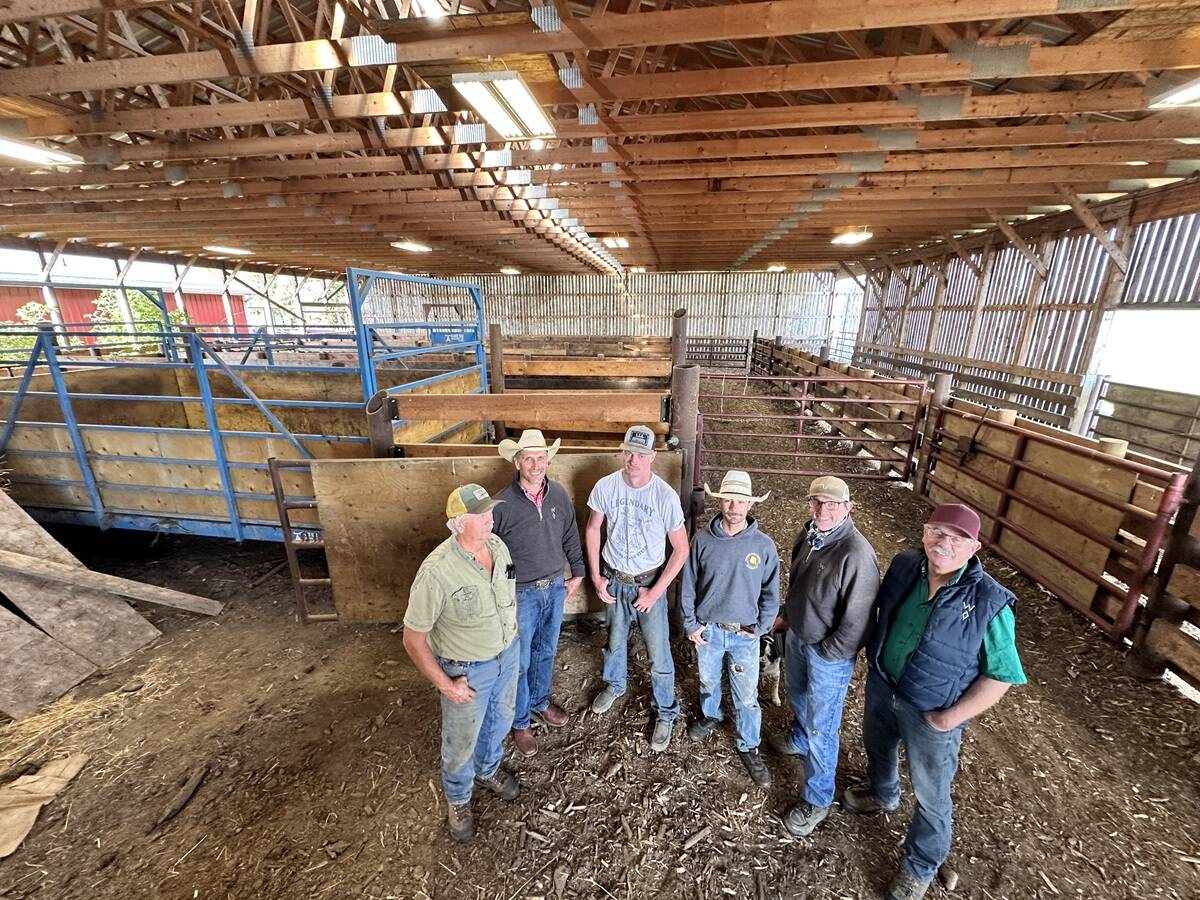
Farm families work together to graze cropland with cattle in the fall
These Alberta farm families have separate operations, but work together to manage their land
“Carbon is a commodity that is being exchanged like beef, corn or soybeans,” he says. He points out there is an industry group called the Agriculture Carbon Alliance representing farmers with the federal government and its carbon pricing policies. It includes 15 major farm organizations including the Canadian Cattle Association, Grain Growers of Canada and the Canadian Forage and Grassland Association.
Herbert is optimistic about farmers’ role in the carbon farming market.
“I think farmers should look at it as an opportunity to shape what’s happening because it’s so new — big companies are getting into it to reduce their (greenhouse gas emissions), and they’re spending money on getting farmers to do things differently,” he says. “We have a chance now to bring together a collective of farmers to lead in the development of this space for their benefit and for the benefit of the Pepiscos, Bayers and Cortevas of the world.”
What is it?
Carbon farming begins with a set of agricultural methods that speed the uptake and storage of carbon in the soil such as using cover crops, reducing tillage and integrating livestock with cropping. The methods must be monitored, reported and verified to come up with carbon credits that can then be sold on the market to companies looking to offset their greenhouse gas emissions.
Beyond the potential monetary gain of selling carbon credits are the benefits of the practices themselves — building resilience of crops, greater productivity in the soil and a better bottom line for farmers.
“When animals are grazing on the land, they’re fixing more carbon,” says Ken Schaus, a beef and cash crop producer located in Elmwood, Ont. He related a story about how he was looking at buying 300 acres north of Lion’s Head on the Bruce Peninsula that had been unused and dormant for 15 years.
“All there was on it was knapweed,” he says. “Land that is grazing cattle fixes more carbon and produces good protein.”
The other upside to getting into the carbon market is defraying the costs of inputs. For example, Schaus says he spent $45,000 on cover crop seed this year. The 12-way mix was seeded into 1,000 acres that previously grew winter wheat, winter barley and winter rye. He says he’s been cover cropping for 10 or 11 years.
“The key thing that farmers should know is where they are and what kind of soil they have,” Herbert says. “They need to know what they’re doing to improve the soil and the productivity of the farm.”
Herbert points out that many large corporations are introducing carbon programs. In the fall of 2021, Cargill launched a carbon farming program in the U.S. for the 2022 season that paid farmers $20 for every ton of carbon sequestered through methods such as no till and using cover crops. They use data from soil sampling, GPS and other farm information for verification.
How it works
There are two types of carbon markets: compliance and voluntary. The compliance (sometimes called mandatory) markets are run by governments which enforce rules around greenhouse gas emissions. Companies that exceed their compliance cap trade credits with those that don’t. Australia, the E.U., China, California and Quebec are among the 30-plus jurisdictions that have these programs.
The voluntary carbon market operates outside the compliance market and participants aren’t compelled to reduce emissions but choose to as part of an environmental strategy. Those that can’t reach their greenhouse gas emissions reduction target buy carbon credits from those who are employing tactics to store or reduce carbon. The buyers can be individual companies or an industry-wide group.
Right now, there’s a huge difference in the size of the compliance market, which had US$851 billion in carbon credits traded globally in 2021, and the voluntary market, which had just US$1 billion traded in the same period.
“One of the issues currently is that they lack scale for investors to participate,” Herbert said during an online presentation for Grey-Bruce Farmers’ Week. “There’s also a lack of high-quality credits being made available on the market.”
At AGgen
Herbert’s company will be a carbon project developer.
“We’re building from the bottom up, for farmers, with farmers,” he says.
He says he’ll have a variety of projects to choose from so farmers can fit projects into their current operations. They also have to be whole-farm based, including woodlots, marshland, cropland and pasture land.
If there’s a transition from conventional practices needed, he says there should be a three- to five-year plan worked out with an agrologist and with someone active on carbon markets.
“We want to be the link between farmers and the buyers of carbon credits,” he says, adding the projects will need to be of value to farmers and is currently seeking out farmers with ideas for projects.
In February, the company had 20 farmers signed up, with five to 10 of them beef producers, in Grey, Bruce, Simcoe and Wellington counties in Ontario, and was looking to sign close to 100 crop and livestock producers before the year’s end.
Herbert is impressed with the Truterra carbon program, which is a Land O’ Lakes company. According to their website, the program has signed 1,900 farmers since it was launched in 2016.
“What I like about them is they’re thinking from the farmer’s perspective as opposed to the buyer’s perspective,” he says.
Drawbacks
In many carbon markets — especially government-run compliance markets, “additionality” is necessary to receive carbon credits.
In other words, farmers who have already been using regenerative practices can’t count the work they’re doing because the practices have to be in addition to practices already being used.
“I think what’s going to propel things forward and make it more inclusive for early adopters like Shaus is the voluntary carbon market,” Herbert says, with programs designed to pay them to participate.
There have been issues with voluntary carbon markets in which credits have been double-sold or sold on forested land that was already protected.
“In more recent projects, there’s been more rigour, and verification is tighter,” he says.
The future for farmers in carbon markets will be interesting, especially if the prediction by global management consulting company McKinsey that voluntary carbon markets could be worth more than $50 billion annually by 2030 comes true.




